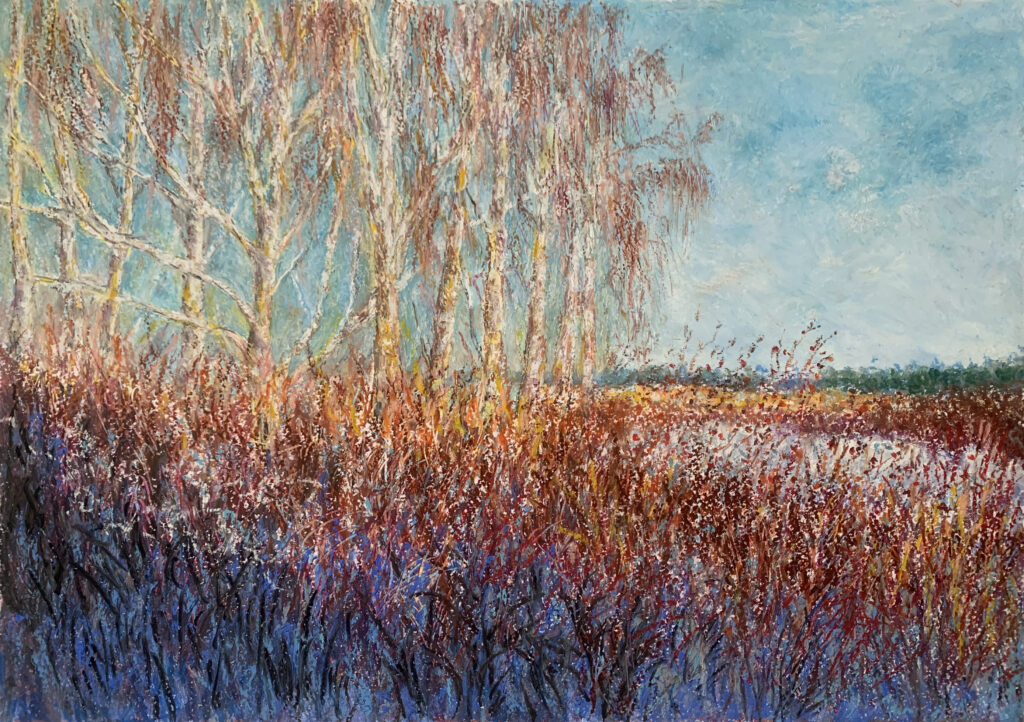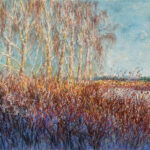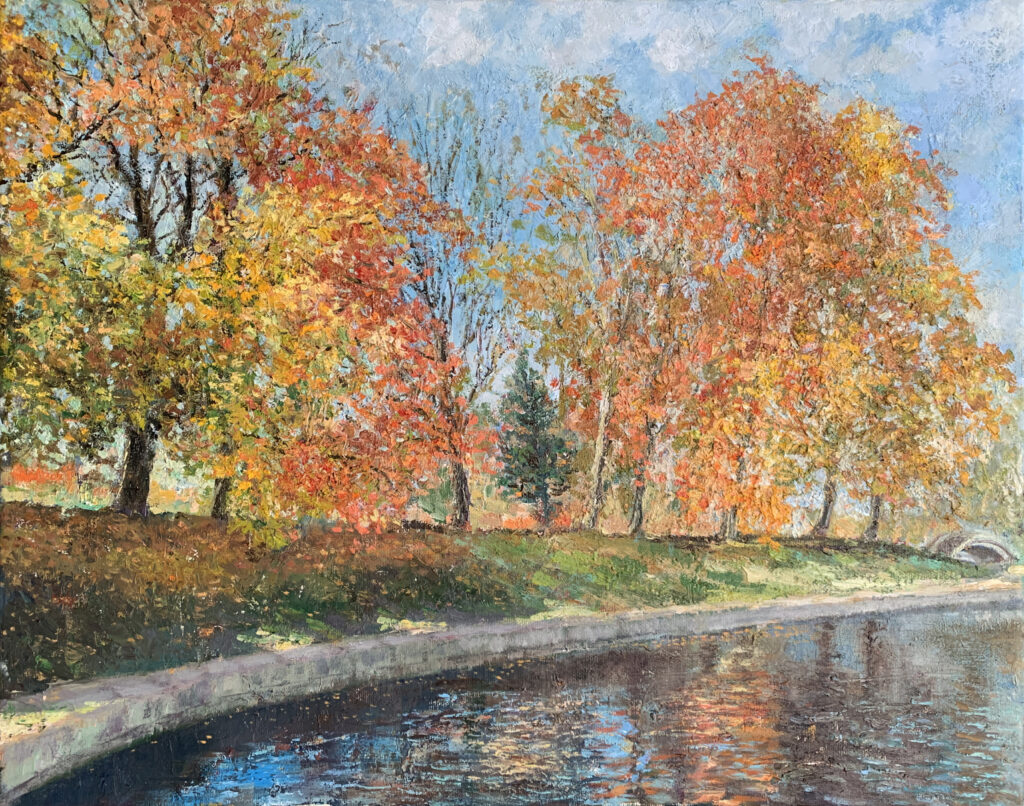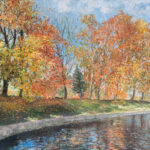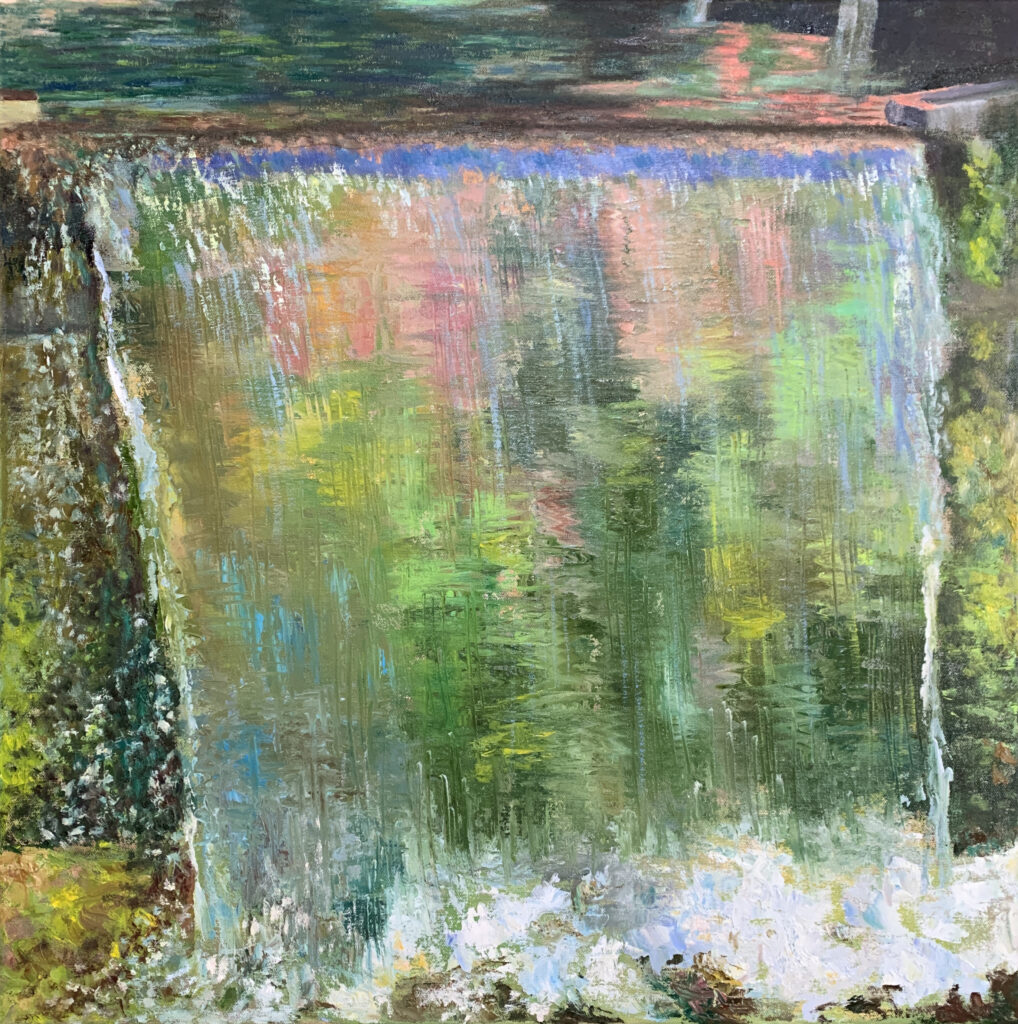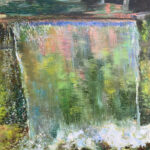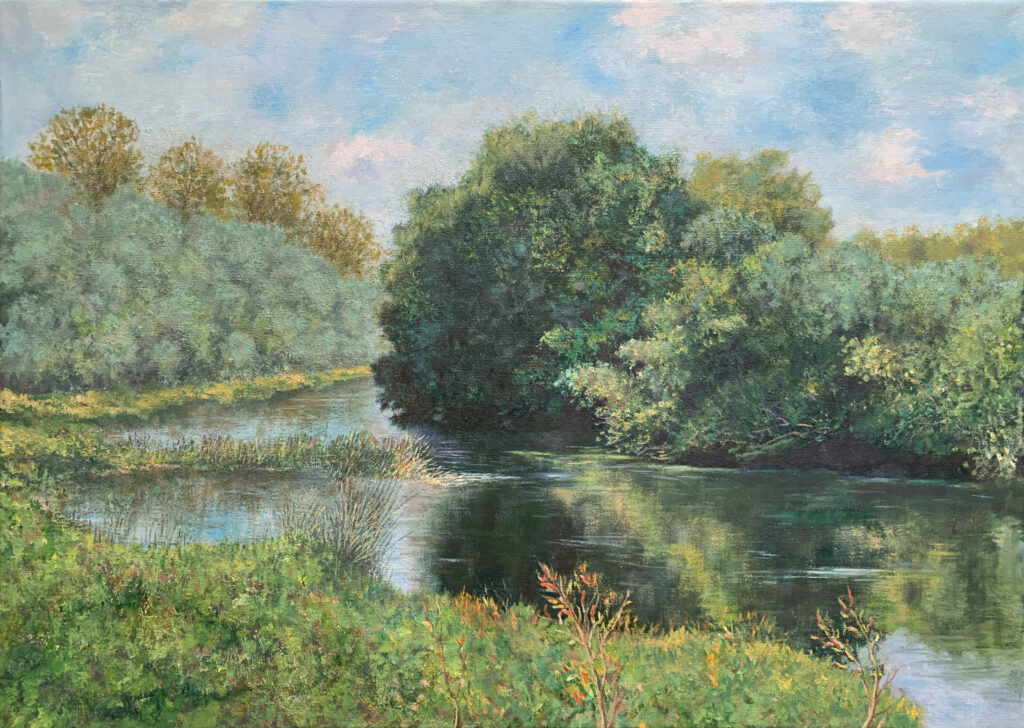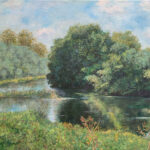Meyer de Haan arrived in Paris from Holland in 1888. He at frst lived with Theo Van Gogh, who introduced him to Paul Gauguin. The two artists struck up a friendship and, in 1889, travelled together to Brittany – frst to Pont-Aven, and fnally settling upon the small town of Le Pouldu. They both considered Pont-Aven too crowded and hoped that Le Pouldu, which was more isolated, would ofer a more intact and authentic image of Breton culture in which to fnd inspiration for their work.
Jacob Meyer de Haan (Dutch, 1852-1895)
Still life with lilac
oil on canvas, 38.5 x 32 cm.
Painted circa 1890
Private collection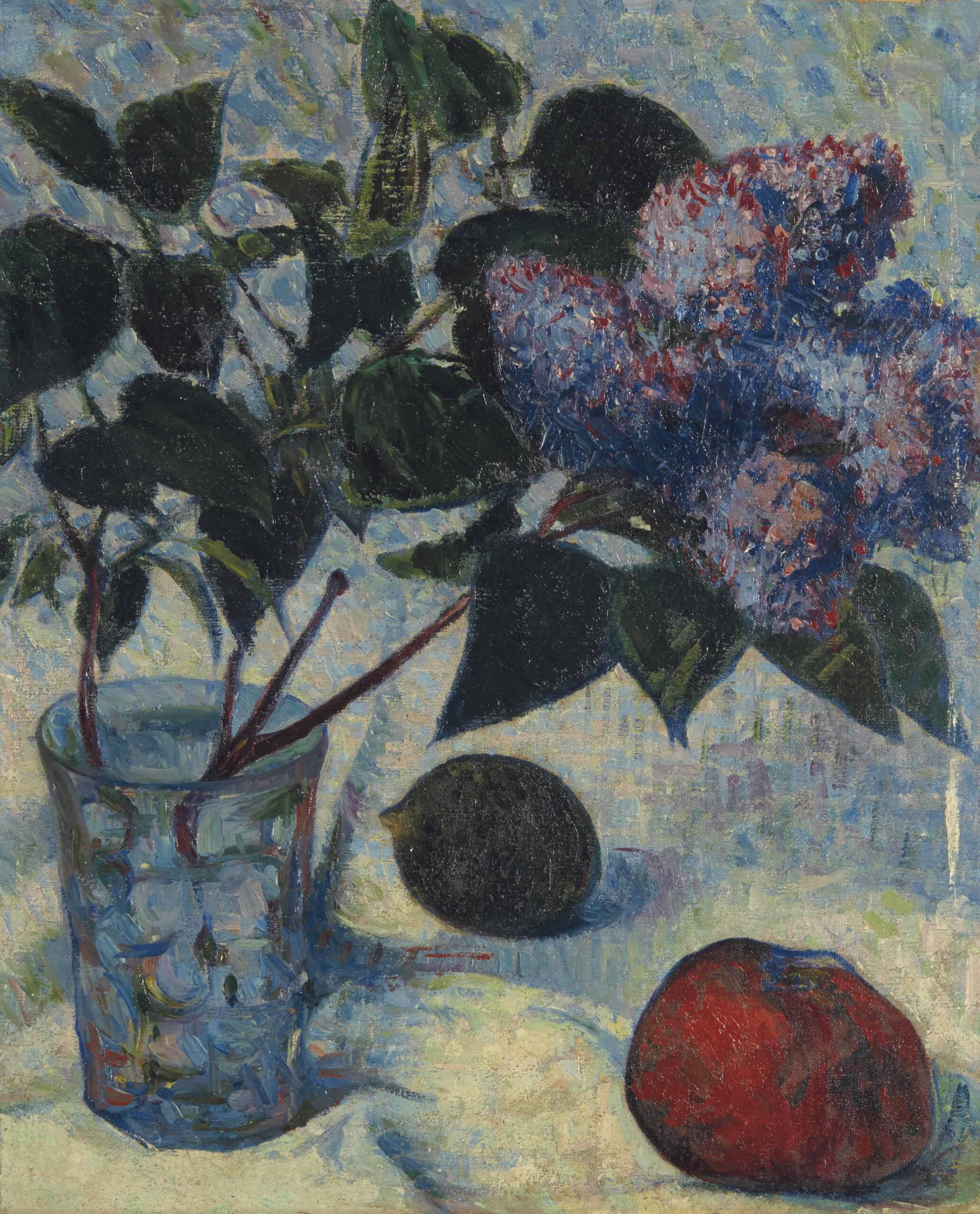
They lodged at “La Buvette de la Plage” a small bed and breakfast run by Marie Henry. Here they transformed the interior, painting and sculpting the walls and doors. Gauguin’s infuence helped Meyer de Haan free himself from academic processes and he increasingly explored his synthetic tendency, leading to the development of the cloisonnist style. Gauguin wrote to Emile Bernard: “De Haan works very well here” and for his part he executed multiple striking portraits of the younger Dutch artist, including a polychrome wooden sculpture, testifying to their close relationship. Meanwhile De Haan succumbed to the charms of Mary Henry, nicknamed ‘Marie Poupée’ (Mary Doll). Despite Marie having already had a child, they began an afair. By the end of 1890, De Haan’s brother, who did not approve of his relationship with an unmarried mother, ordered his brother to return to Holland. De Haan returned to Paris in 1891, and organized a banquet for Gauguin, who was planning his frst trip to Tahiti. In June, Mary Henry gave birth to Meyer de Haan’s frst child. His family threatened to disown him, and so he returned defnitively to Holland, leaving behind Marie and their daughter as well as his stock of nearly ffty paintings.
Gauguin’s impact on Meyer de Haan’s work is evident in Nature Morte au Lilas. The opposition between the cold tones of the lilac, the lemon and the sheet which occupies most of the composition, all counterbalance the apple’s warmer tones in the foreground.This type of still life also recalls the infuence of Paul Cézanne on Gauguin, the latter having owned Cézanne’s 1880 work Compotier, verre et pommes (private collection).


